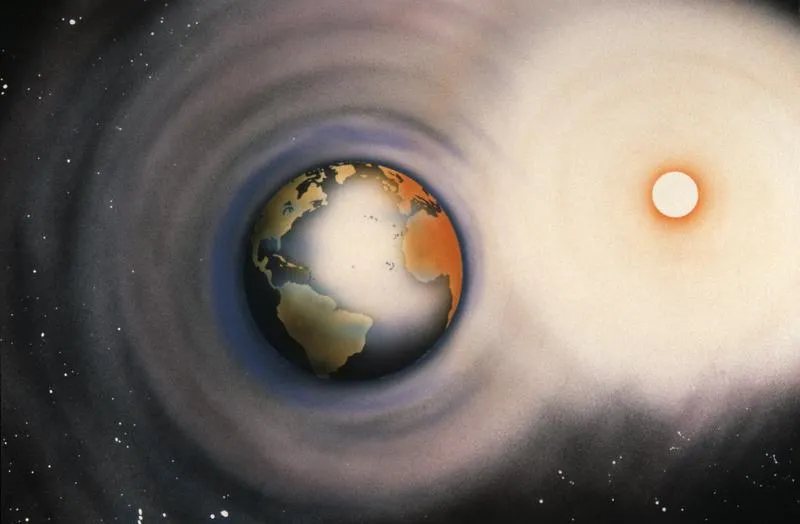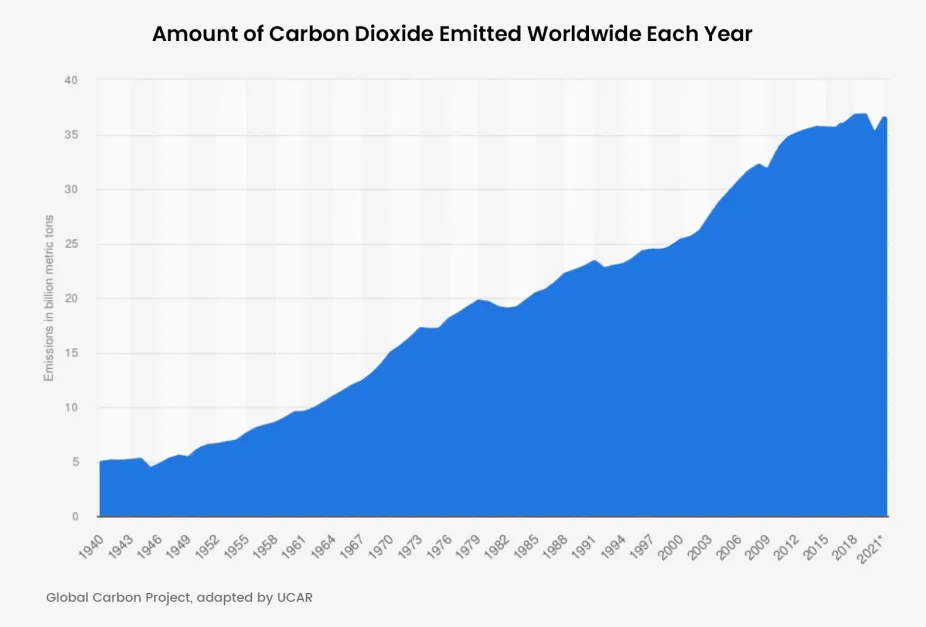Why Does Climate Change?
Some factors that have the power to change global climate are natural, like volcanic eruptions and changes in the amount of solar energy that gets to Earth. Other factors, which are causing climate change today, are caused by humans, like burning fossil fuels which adds greenhouse gases to the atmosphere.
Changes in the Sun Can Affect Climate.
Since almost all the energy on Earth comes from the Sun, changes in the Sun can have an impact on Earth. Changes in the cycle of solar activity, called the 11-year sunspot cycle, can cause small changes in the amount of solar energy that gets to Earth. However the amount of energy only changes 0.15% over the cycle, which has a very minor impact on climate compared with other factors. These changes in the Sun are too small to be the cause of recent climate change.
There are also larger changes in the amount of energy that comes from the Sun that occur over decades and centuries. These changes are able to affect Earth’s climate. During strong solar cycles, the Sun's total average brightness can vary by up to 1 Watt per square meter; this variation affects global average temperature by 0.1 degrees Celsius or less. Changes in the Sun's overall brightness since the pre-industrial period have been minimal, likely contributing to no more than 0.01 degrees of the roughly 1 degree Celsius of warming that has occurred since the late 1800s.

The Sun has a major impact on Earth's climate.
UCAR
Changes in Earth’s Orbit Affect Climate.
The amount of solar energy that gets to Earth is also affected by the way our planet orbits the Sun and the tilt of Earth’s axis. The way Earth orbits the Sun changes in regular patterns over tens to hundreds of thousands of years. These changes have caused large changes in climate in the past such as the Ice Ages.
Big Volcanic Eruptions Can Cause Climate to Cool.
Erupting volcanoes spew red-hot lava and ash into the air. The lava falls to the ground immediately and the ash settles to the ground in a few days. Neither of those have much impact on climate, but there are also tiny particles (aerosols) of sulfur dioxide that spew from volcanic eruptions. They get into the atmosphere and reflect solar radiation back out to space, shading the Earth - causes cooling. The cooling is temporary, lasting usually a year or two. Eventually, the particles fall out of the atmosphere to the ground.
Greenhouse Gases Warm the Climate.
Even though greenhouse gases make up less than 1% of the atmosphere they have a major effect on climate. Greenhouse gases trap heat in the atmosphere through a process called the greenhouse effect. Having some greenhouse gases in the atmosphere is natural. Their heat-trapping abilities keep Earth from being uncomfortably cold. However, the amount of greenhouse gases in our atmosphere has increased over the past 150 years as people burn fossil fuels, like coal, oil and gas, which release carbon dioxide into the atmosphere. The amount of carbon dioxide has also increased as people have changed landscapes, decreasing the amount of forests, which naturally pull carbon dioxide out of the air as the trees and other plants photosynthesize.
Volcanoes can also release carbon dioxide, however, it is a tiny fraction of what is released into the atmosphere by burning fossil fuels.

The plot shows that annual carbon dioxide emissions have mostly increased over time, from 1940-2021. The slight dip in the numbers in 2020 corresponds to less carbon dioxide emissions during the lockdowns associated with the COVID-19 pandemic.
Global Carbon Project
Less Snow and Ice Cause More Warming.
Because snow and ice are light in color, they have the ability to reflect most of the sunlight that hits them out to space. When snow and ice melt as Earth’s climate warms, less energy is reflected out to space so more stays in the Earth system, which causes even more warming. It’s a vicious cycle.
Other Impacts
There are also other aspects of our planet that have an impact on climate too. Scientists are studying the impact of clouds and tiny particles in the atmosphere called aerosols on climate in hopes of adding more detail to models used to predict future climate. Scientists are also keeping track of how water moves through the world’s ocean. As the amount of sea ice in the Arctic melts, the flow of ocean water could change. Since the water transports heat from place to place this could have a large effect on climate in different regions of the world.